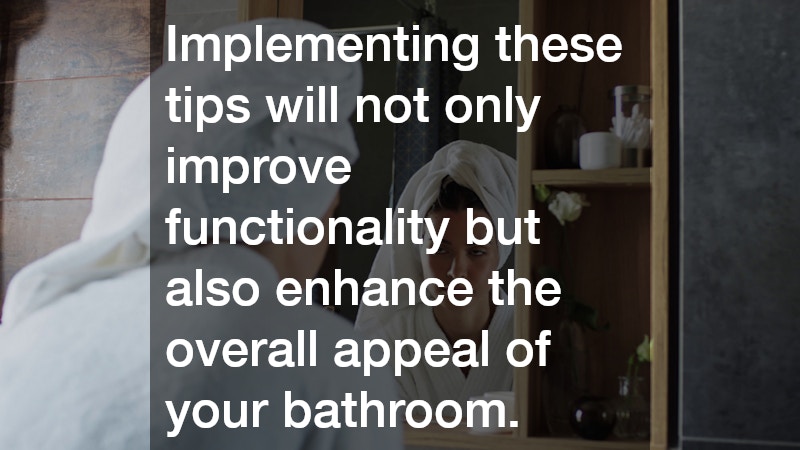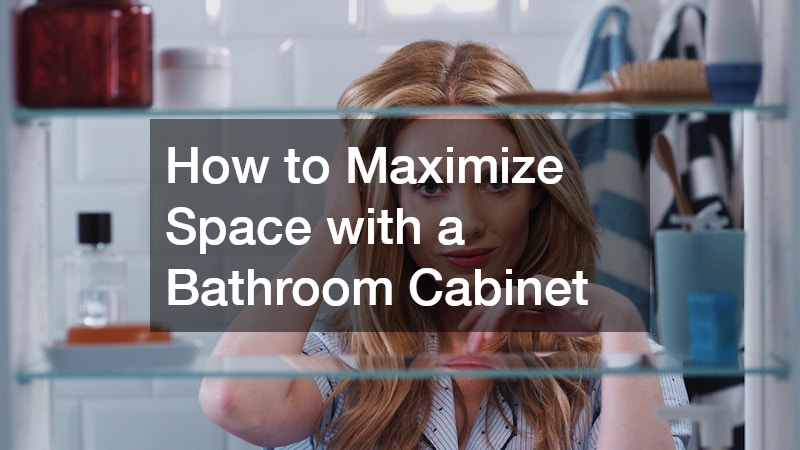In modern homes where space is often at a premium, particularly in urban settings, maximizing every square inch is crucial. The bathroom, often the smallest room in the house, poses unique challenges and opportunities when it comes to storage. A well-organized bathroom cabinet is not merely a place to hide unsightly toiletries, but a strategic tool to maintain an efficient and clutter-free environment.
What are the Best Types of Bathroom Cabinets for Small Spaces?
Wall-mounted cabinets are an excellent choice for small bathrooms because they free up valuable floor space. By utilizing the vertical area, these cabinets provide ample storage that can be both functional and aesthetic.
They can be installed at varying heights, making them accessible and convenient to everyone’s reach.
Corner cabinets take advantage of often underutilized spaces in the bathroom. By fitting seamlessly into corners, they provide additional storage without infringing on floor space. These cabinets can accommodate a surprising amount of items while maintaining a low profile that doesn’t overwhelm a small bathroom.
Over-the-toilet cabinets utilize vertical space effectively by providing storage above existing fixtures. This design maximizes unused space, making it an ideal solution for smaller bathrooms where storage options are limited. These cabinets often feature a combination of open shelving and closed storage, allowing for both display and privacy.
How to Organize a Bathroom Cabinet Effectively
Dividers and bins can transform a chaotic cabinet into a neatly organized space. Using these tools creates designated areas for different items, making it easier to keep everything accessible. Dividers can be used to separate larger necessities, while smaller bins contain loose items like accessories and toiletries.
Decluttering is a vital step in organizing any space, especially bathroom cabinets. Begin by removing expired products and those that haven’t been used in a while, focusing on essentials. Prioritizing items based on daily usage ensures that only necessary items occupy premium shelf space, leaving room for essentials.
Labeling and categorizing items within your bathroom cabinet can dramatically increase efficiency and ease of access. Labels simplify the process of finding items quickly, and categorizing by type or need reduces the time spent searching. This method is particularly helpful in households with multiple users, as it maintains consistency and order.
What Materials are Best for Bathroom Cabinets?
Bathrooms are naturally humid environments, making it essential to choose moisture-resistant materials for cabinets. Options like laminated finishes and MDF can withstand humidity better than traditional wood. These materials prevent warping and sustain the cabinet’s longevity even in constantly moist conditions.
When selecting bathroom cabinets, durability and ease of maintenance should be top priorities. Solid wood or stainless steel are known for their durability, though they may require more upkeep. Regular maintenance of these materials ensures they remain in top condition, providing long-lasting functionality.
Aside from functionality, the aesthetic appeal of a cabinet can enhance the bathroom’s overall appearance. Choosing finishes and styles that complement the existing decor can create a cohesive look. Whether opting for a sleek modern design or a classic traditional cabinet, blending functionality with style is key.
How to Customize a Bathroom Cabinet for Personal Needs?
Adjustable shelving is a versatile feature that allows customization within the bathroom cabinet. Shelves that can be moved or removed adapt to varying storage needs, accommodating both tall bottles and small containers. This flexibility empowers users to design a storage solution that fits their lifestyle.
Adding hooks and rods within or around a bathroom cabinet expands its functionality. Hooks offer a convenient place to hang items such as towels or bathrobes, while rods can be used for additional towel storage. These additions make it easy to store frequently used items efficiently and within reach.
Integrating lighting within bathroom cabinets is highly beneficial for enhancing visibility. LED strip lights or small battery-operated lights can illuminate the cabinet’s interior, making it easier to locate items. Proper lighting not only improves functionality but also adds a touch of sophistication to the cabinet design.
What are Some DIY Tips for Maximizing Cabinet Space?
Even minor reorganizations can dramatically improve the space efficiency of a bathroom cabinet. Simple hacks like rearranging shelves or using stackable bins can create more room. These strategies are cost-effective and quick to implement, offering immediate benefits without extensive renovation.
Household items can be repurposed to serve as additional storage solutions within a bathroom cabinet. Mason jars, for instance, can hold cotton balls or brushes, while small baskets can organize under-sink supplies. This approach is eco-friendly and budget-conscious, utilizing existing resources creatively.
Adopting seasonal organization strategies helps to adjust cabinet usage throughout the year. Rotate items based on seasonal needs, such as facial creams for winter and sunscreens for summer. This dynamic organization ensures that space is allocated for relevant items, maintaining order throughout the year.
Maximizing cabinet space in the bathroom involves a strategic blend of selecting appropriate cabinet types, organizational techniques, and material choices. By applying these strategies, you can achieve a clutter-free, efficient, and stylish environment. Implementing these tips will not only improve functionality but also enhance the overall appeal of your bathroom.

